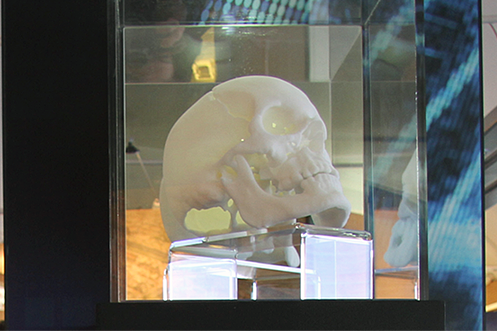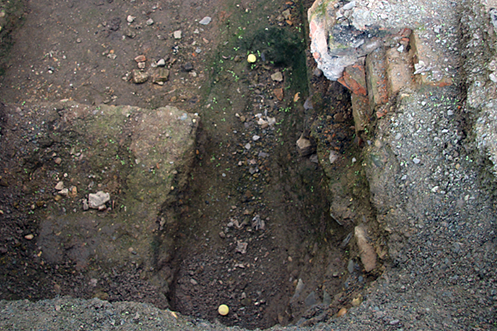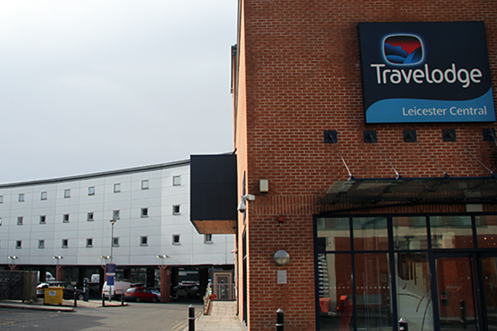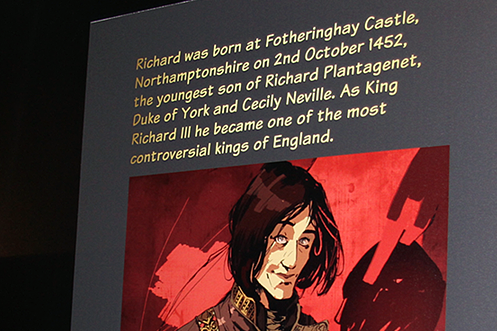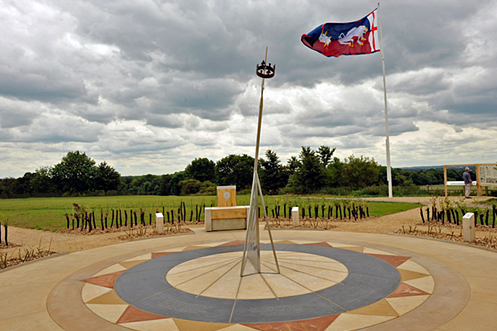I’ve always been fascinated by English history. One story that always stuck with me when I was doing my A levels at school was the tale of Perkin Warbeck. A pretender to the throne, he claimed to be one of the Two Princes in the Tower who, according to one theory, were murdered by their evil uncle Richard III. Earlier this week it was revealed by Leicester University, in conjunction with Leicester Council and the Richard III Society that bones found in a social services car park of all places belonged to none other than that very king, Richard III. And when the Leicestershire tourist board invited me to go to Leicester for a sneak preview of some of their newest Richard III inspired attractions I was keen to see if they would shed any light on the mystery behind the man himself, King Richard III, Leicester’s hidden gem.
Our first stop was a brand new exhibition, Richard III: Leicester’s Search for a King, at Leicester’s medieval Guildhall. The exhibition is free and, similar to the Channel 4 documentary, it delves into the unprecedented hunt for the remains of Richard III, detailing the excavation and findings of archaeologists. If anyone is in doubt that the skeleton really was Richard III’s, scientific proof, including DNA evidence confirms it. My favourite part of the exhibition is the replica of Richard III’s skull made from a CT scan of his actual skull (which is a bit spooky). I also got the chance to speak to Philippa Langley, a member of the Richard III Society who appeared in the TV documentary.
She admits she was a woman on a mission as, convinced she had a mad feeling she was walking on Richard’s grave, led her own crusade to find his remains. The overwhelming feeling from the exhibition is that King Richard wasn’t such a bad bloke after all, well no worse than any of his contemporaries, though whether it’s because the Richard III Society were involved in the project may have something to do with it.
I was quite excited that I also got to check out THE car park, as you can see from my picture above, where Richard III’s skeleton was found.Unfortunately it’s not yet open to the public so my picture will have to do for now but there are plans afoot to open it up to everyone next year.
The Leicester Blue Badge Guided Walks are also currently running a tour where you can learn about Richard III’s connections to the city of Leicester, visiting key locations he was associated with. It especially cracked me up to discover that the current site of the Blue Boar Inn where, in 1485, the former King of England spent his last night alive before the Battle of Bosworth, is now a Travelodge. The tour also stops at Leicester Cathedral, which also led to another surreal moment as suddenly Minty from EastEnders appeared and sat down to have a cup of tea in the quaint little cafe inside run by volunteers.
We also paid a visit to the Bosworth Heritage Centre (about a 30 minute drive from Leicester town centre) where we got to check out another of Leicester’s hidden gems, a brand new exhibition called Richard III – The Myth Behind The Man. What I loved about it is that rather than being the usual boring pictures and text format it used graphic-novel style illustrations to bring the story of Richard III to life, leaving you to make your own mind up as to how much of a villain he may have been.
I was a bit gutted that we didn’t have time to go to the actual Bosworth Field (the Heritage Centre isn’t actually on the site of the original battlefield). We had to make do with a quick walk up Ambion Hill, next to the Heritage Centre, where I still managed to get a glimpse of the battlefield. But if you do get the chance, from March the Heritage Centre runs either 2-hour or full day walks giving you the chance to stand in the spot where Richard was slain, putting an end to the War of the Roses.
Richard III was vilified by Shakespeare and as a result is one of England’s most controversial monarchs. While it’s been possible to create a facial reconstruction of him there are still many questions that remain unanswered. But what’s certainly true is that whether was a decent man (Richard III introduced laws that included the right to bail and lifted restrictions on books and the printing press) or he was indeed a hunchbacked tyrant his is a fascinating story that continues to be the source of endless debate.
